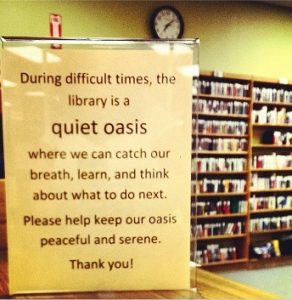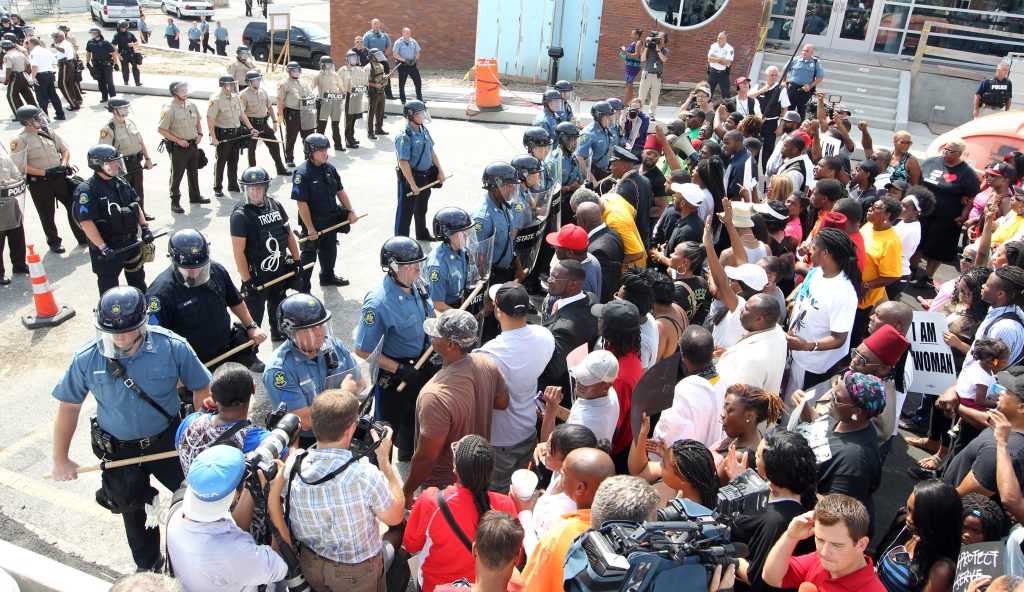
During one of the earlier modules this semester, I remember seeing a library sign that read:
“During difficult times, the library is a quiet oasis where we can catch our breath, learn, and think about what to do next. Please keep our oasis peaceful and serene” (ALA, 2015).
I’ve been thinking about that sign a lot lately, particularly with the current turbulent political climate. It made me wonder: How can we create welcoming spaces during challenging times?
The sign comes from the Ferguson Municipal Public Library, where it was displayed in the summer of 2014. That August, Michael Brown, an unarmed Black teenager who had recently graduated from high school, was shot and killed by a white police officer. In the days that followed, Ferguson became the center of national attention. Protests broke out, businesses closed, schools shut down, and tensions ran high.

The streets of Ferguson, Missouri, in summer 2014. Photo credit: Bill Greenblatt
While much of the city shut down, the library remained open. It quickly adapted to the community’s needs and became an essential meeting place and support center. The library teamed up with teachers and volunteers to serve as an impromptu school site (Inklebarger, 2014). With the help of local teens, staff created “healing kit” backpacks filled with mental health materials, civil rights information, and even teddy bears—something comforting that kids could keep (Alajmi, 2016). Beyond being a refuge from the chaos outside, the library served as a reliable source of information for residents and visiting journalists (Alajmi, 2016).
What the Ferguson Library accomplished under such intense circumstances is especially remarkable considering the director, Scott Bonner, had only been on the job for five weeks, and the rest of the staff consisted of just twelve part-time employees. Reflecting on that time, Bonner said, “We just did what libraries do” (Bonner, 2016). It’s a powerful reminder that in moments of crisis, libraries don’t need to have all the answers. They just need to stay open, stay responsive, and offer a space where people can catch their breath and begin to move forward.
References
ALA. (2015). One year later: An interview with Ferguson (Mo.) library director Scott Bonner. ALA. www.ala.org/tools/librariestransform/libraries-transforming-communities/blog/one-year-later-interview-ferguson-mo-library-director-scott
Alajmi, B. (2016). When the nation is in crisis: Libraries respond. Library Management, 37(8/9), 465-481. https://doi.org/10.1108/LM-05-2016-0043
Bonner, S. (2016). Ferguson voices: Disrupting the frame with stories of action, courage, and transformation. Ferguson Voices: A Moral Courage Project. https://www.fergusonvoices.org/voices/scott-bonner
Inklebarger, T. (2014, November 10). Ferguson’s safe haven: Library becomes refuge during unrest. American Libraries. https://tinyurl.com/5u34xrwa

Thank you so much for sharing this.
@ginamik this is a powerful reminder of what happened in Ferguson and how we might be inspired from how the library responded during times like these. I love the idea of the backpack with materials and a teddy bear. So glad you focused on this image and wrote this reflection.